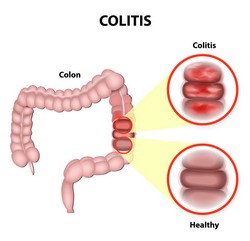Treatment for inflammatory bowel disease
Cytokines are implicated in various biological processes including cell differentiation, immune response and inflammation with deregulated levels being concomitant with disease. Often to counteract the aberrant expression of cytokines such as TNF-α, therapeutic antibodies have been successfully used. However, these come in injectable form rendering patient compliance difficult. An oral formulation would be ideal especially for diseases localised in the gut like intestinal bowel diseases (IBD). Unfortunately, the hostile environment of the gut restricts the oral bioavailability of conventional biologics such as antibodies. Nanofitins function as a new class of non-antibody affinity ligands able to selectively bind a wide range of targets. Importantly, engineered Nanofitins maintain their favourable biophysical properties of the wild type Sac7d protein, namely resistance to high temperature, stability under a broad range of pH and resistance to degradation in the human stomach, small intestine and large intestine. The idea behind the EU-funded SADEL (Scaffolds for alternative delivery) project was to exploit the Nanofitin technology for the delivery of antibodies. This is based on the Sac7d protein scaffold from the hyperthermophilic Sulfolobus acidocaldarius, which is encountered in sulphur-rich hot acid springs. Engineering of the Nanofitin scaffold through amino acid substitution was exploited to target specific proteins following the key-lock principle. SADEL researchers focused on generating Nanofitins against TNF-α to reduce inflammation and treat ulcerative colitis. Several candidates were obtained and nine of these were screened for efficacy in a mouse model of the disease. Two of these molecules demonstrated similar efficacy to the standard ulcerative colitis treatment, indicating their stability in the hostile environment of the intestine. Significant efforts were devoted to mass-scale production, formulation optimisation and pre-clinical pharmacokinetic analysis. Overall, the increasing prevalence of IBD and the unmet treatment needs triggered the SADEL consortium to invest in Nanofitin technology. Apart from being efficacious, Nanofitins’ manufacture involves bacterial fermentation and is therefore cheaper to produce than antibodies. Most importantly, the oral route of administration is expected to improve patient comfort and compliance to treatment.
Keywords
Inflammatory bowel disease, antibody, SADEL, Nanofitin, Sac7d protein

